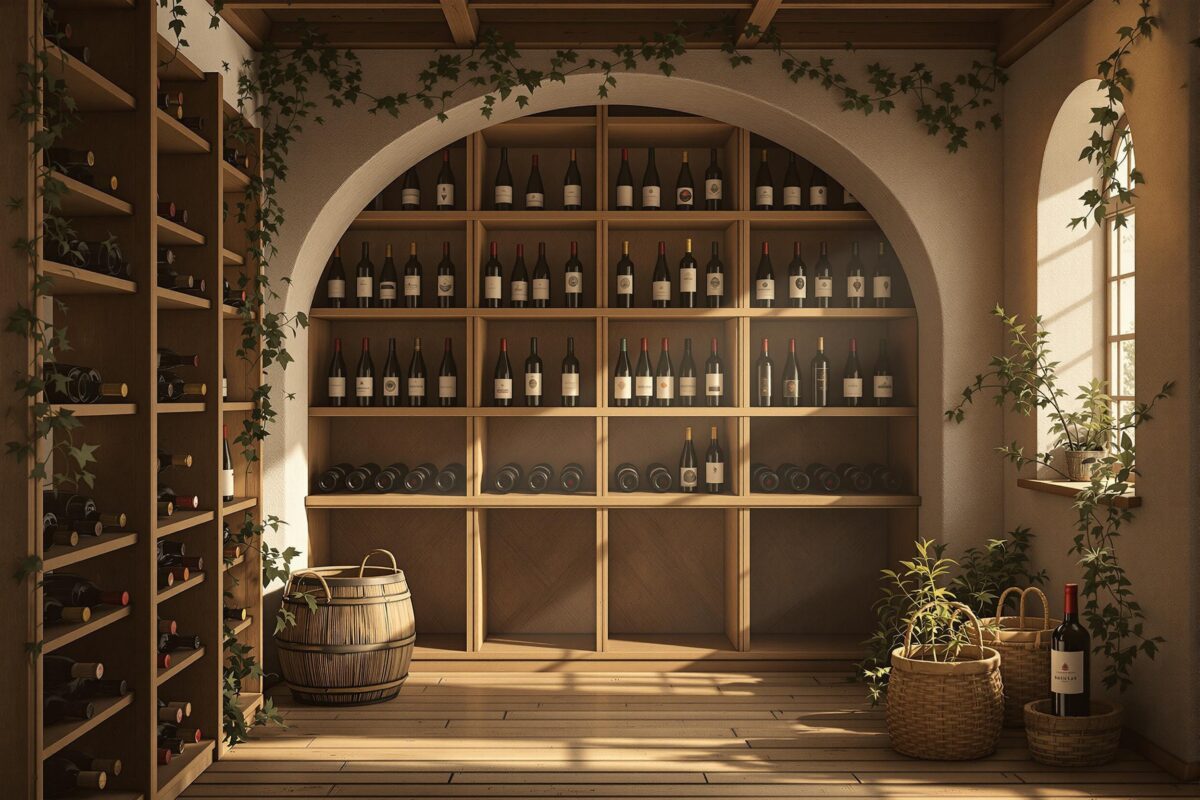Wine transcends mere beverage status; it embodies heritage, artistry, and celebratory moments. Preserving a wine’s integrity and longevity is paramount for enthusiasts and collectors. This comprehensive guide delves into the art and science of wine storage, exploring essential conditions and practical tips. Discover how to create the perfect environment, ensuring every bottle reaches its full potential.
Trend Analysis: Innovations in Wine Storage Design and Technology
The world of wine storage is constantly evolving, embracing technological advancements and a growing appreciation for fine wines. Current trends showcase smarter, eco-conscious, and space-saving solutions.
Smart Cellar Technology: Precision Control for Optimal Aging
Smart cellar technology is revolutionizing wine preservation, offering unprecedented control over environmental factors. Automated temperature and humidity regulation, remote monitoring via smartphone apps, and inventory systems ensure ideal aging conditions. Imagine adjusting your cellar’s temperature from your phone while miles away! This level of control protects investments and ensures wines age gracefully.
Sustainable Wine Storage Design: An Eco-Friendly Approach
Sustainability is a growing concern, influencing wine storage design. Eco-friendly wine racks crafted from recycled or sustainably sourced wood are gaining popularity. Energy-efficient cooling systems and durable wine cellars minimize environmental impact and align with eco-conscious values.
Space-Efficient Wine Storage: Solutions for Compact Living
Limited space shouldn’t hinder wine collecting. Modular wine racks, wall-mounted options, and slim-profile cabinets maximize capacity. Under-staircase cellar conversions offer creative solutions, demonstrating that effective preservation is achievable regardless of space.
In-Depth Analysis: Ideal Storage Conditions and Their Effects on Wine Quality
Optimal wine preservation hinges on meticulously controlling environmental factors. These conditions directly impact the wine’s chemical processes, influencing flavor development and overall quality. Consistent temperature, appropriate humidity, minimal light exposure, and vibration control are crucial for long-term storage success.
Wine Temperature: The Cornerstone of Wine Aging
Temperature is arguably the most critical factor. Fluctuations can cause cork damage and oxidation. Excessive heat accelerates aging, while extreme cold inhibits development. The optimal range is 55-65°F (13-18°C) for reds and 45-50°F (7-10°C) for whites. Maintaining consistency within these ranges is key to fostering ideal aging.
Cellar Humidity: Balancing Moisture for Preservation
Humidity impacts cork integrity. Low humidity dries corks, allowing oxidation; high humidity encourages mold growth. Optimal humidity is between 50-80%. Balancing moisture levels is often overlooked, but vital for preserving long-term quality.
Light and Vibration: Silent Threats to Wine Quality
Light, especially UV rays, causes chemical reactions leading to off-flavors. Vibration disturbs the aging process. Storing wines in dark, stable locations away from appliances is essential for mitigating these risks.
Innovative Solutions: Space-Efficient Ideas and Modern Tools
Modern wine preservation goes beyond traditional cellars. Space-efficient solutions and tools like advanced cabinets and specialized racks combine functionality with aesthetics.
Wine Cabinets: Temperature-Controlled Storage
Wine cabinets offer precise temperature control, often with separate zones for reds and whites. Humidity control, UV-protective glass, and vibration dampening features enhance preservation. They provide a convenient plug-and-play solution, eliminating the need for extensive renovations.
Wine Racks: Versatile and Customizable Solutions
Wine racks provide organized storage. From classic wooden designs to contemporary metal styles, racks offer versatility to suit various preferences and storage needs. Specialized racks accommodate different bottle sizes and formats.
Creative Space-Saving Ideas for Limited Areas
Under-staircase conversions, basement corners, built-in kitchen racks, and vertical storage solutions maximize limited space. Even repurposing furniture can create effective wine storage, regardless of square footage.
Visual Elements: Comparisons of Cellar Designs and Cooling Systems
Understanding different cellar designs and cooling systems enables informed decisions.
Traditional Wine Cellar Designs: Underground vs. Walk-In
Underground cellars benefit from natural insulation but can be costly to construct. Walk-in cellars, built above ground, offer greater accessibility and design flexibility. Each design has advantages, depending on budget and space.
Modern Wine Cabinet Designs: Freestanding vs. Built-In
Freestanding cabinets are portable and come in various sizes. Built-in cabinets offer a seamless, integrated look but require professional installation. Both offer effective preservation.
Cooling System Comparisons: Compressor vs. Thermoelectric
Compressor-based cooling provides powerful, precise temperature control but can be louder. Thermoelectric cooling is quieter and less energy-intensive, suitable for smaller cabinets. Each system has benefits and drawbacks to consider.
Practical Tips: Wine Storage Do’s and Don’ts
Effective wine storage relies on following best practices.
Wine Storage Do’s: Essential Practices
- Maintain consistent temperature.
- Control humidity.
- Store bottles horizontally.
- Minimize light exposure.
- Reduce vibration.
- Monitor conditions regularly.
- Invest in quality storage.
Wine Storage Don’ts: Common Mistakes to Avoid
- Don’t store wine in the kitchen.
- Don’t store wine on top of the refrigerator.
- Don’t expose bottles to direct sunlight.
- Don’t store wine upright long-term.
- Don’t neglect temperature monitoring.
Mastering wine storage blends scientific principles with practical application. By understanding key factors, enthusiasts and collectors create optimal environments for their treasured bottles. Innovative solutions make effective preservation accessible to all, ensuring every bottle reaches its peak potential.
